Dutch Defence Helicopter Command
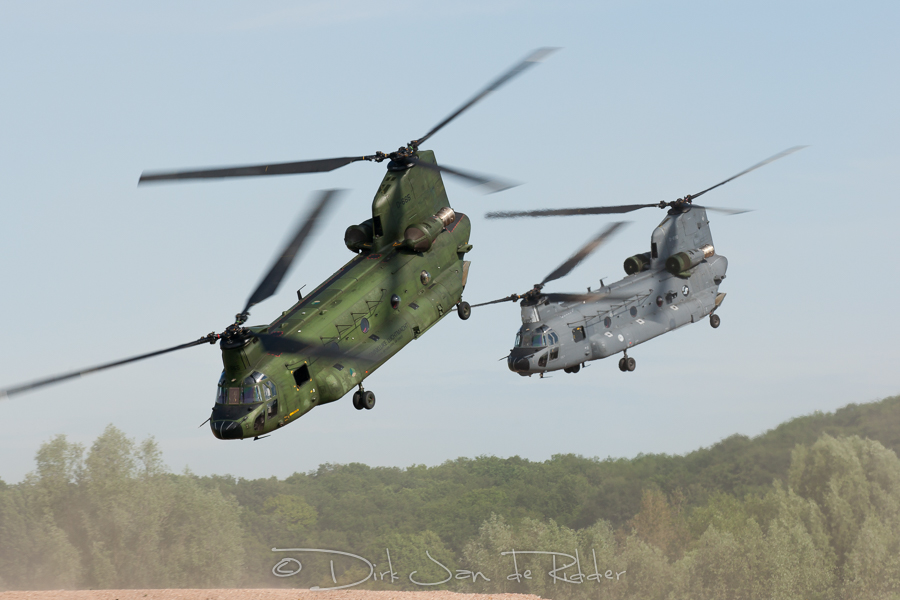
The Defence Helicopter Command (DHC) of the Dutch armed forces was founded in 2008 and brought the helicopters of the Royal Netherlands Air Force and the Royal Netherlands Navy under a single command structure. After the retirement of the Westland Lynx in September 2012, the command is left with six helicopter types, three of which will be retired over the next three to five years.
Whenever Dutch helicopter units and air mobile troops operate together, they form the 11 Air Manoeuvre Brigade. An air assault is one of their main tricks of the trade. Speed, reach and surprise elements play an important role during air assaults, when ‘red berets’ are transported by air to enemy lines supported by attack helicopters. Only few other NATO countries are able to perform air assaults by themselves. The requirement for this capability was born in the early 1990s. The need for air support became painfully apparent during the brigades first deployment, when Dutch soldiers were left without air support when Serbian tanks rolled into the town of Srebrenica (Bosnia) and Serbian soldiers deported the non-Serb population, under the eyes of Dutch peacekeeping troops who were left without heavy armour or air support. The helicopter force, then mainly consisting of Alouette IIIs and Bo-105s, was replaced with 30 AH-64D Apaches, 17 AS532U2 Cougars and 13 CH-47D Chinooks by the year 2000.
The helicopters have frequently been deployed abroad including to Bosnia (SFOR), Djibouti and Eritrea (UNMEE), Iraq (SFIR) and Kosovo (KFOR). In the context of Operation Enduring Freedom and ISAF all three helicopter types went to Afghanistan for long deployments. The Apaches have continuously operated over the country between April 2004 and November 2010. Chinooks and Cougars arrived a year later and they alternated their deployments until the end of 2010. The Cougars used to undertake the winter deployments, because the Chinooks performed much better in hot summer weather and at high altitude.
Two of 298 Squadron’s CH-47Ds were lost in hard landings in Afghanistan, so only 11 remain in service. Especially the seven former Canadian airframes (built in 1974) are beginning to show signs of ageing. Original plans called for the CH-47Ds to receive a mid-life update from 2016, but the ministry of defence now prefers to replace them with new CH-47Fs. Although an update program is definitely the cheaper alternative, the difference will be compensated by lower maintenance costs, better availability and standardisation of the fleet. A budget still has to be made available for either option.
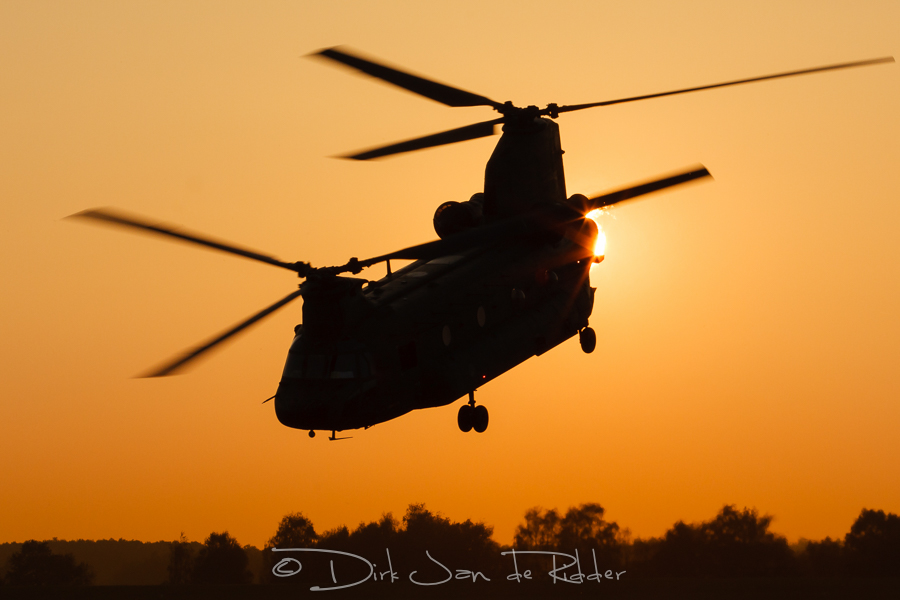
Six new CH-47Fs, which are not replacing any CH-47Ds, were delivered from August 2012. Apart from its grey color scheme, the ‘Foxtrot’ is externally distinguished from the ‘Delta’ by the EOIR (Electro Optical Infra Red) turret under its nose, which contains 3 sensors and cameras, including Forward Looking Infra Red. These sensors will give the crew a better situational awareness making it ideal for integrated operations with special forces, a new role that the CH-47F will perform. Other improvements include ballistic protection, communications equipment, self-protection systems (CHASE – Chinook Aircraft Survivability Equipment) and the installation of .50 M3M machine guns. Special forces teams will be able to get off the helicopter by fastrope from five positions simultaneously. It only takes pilots a week of ground school and six flight hours to convert to the Foxtrot since the cockpit interface is nearly identical. A joystick used to control the EOIR turret is one of the only differences.
300 Squadron’s fleet was reduced from 17 helicopters to just three in May 2011. Only 2 months later this decision was reversed and the squadron kept eight Cougars after the ministry of defence realised it did not have enough assets for maritime operations and homeland duties (search and rescue and fire fighting). From July 2011 the Cougar replaced the Lynx in the SAR role pending the arrival of the NH90. A year later 300 Squadron even deployed on its first deployment to the Gulf of Aden on board the HMS Rotterdam landing platform dock.
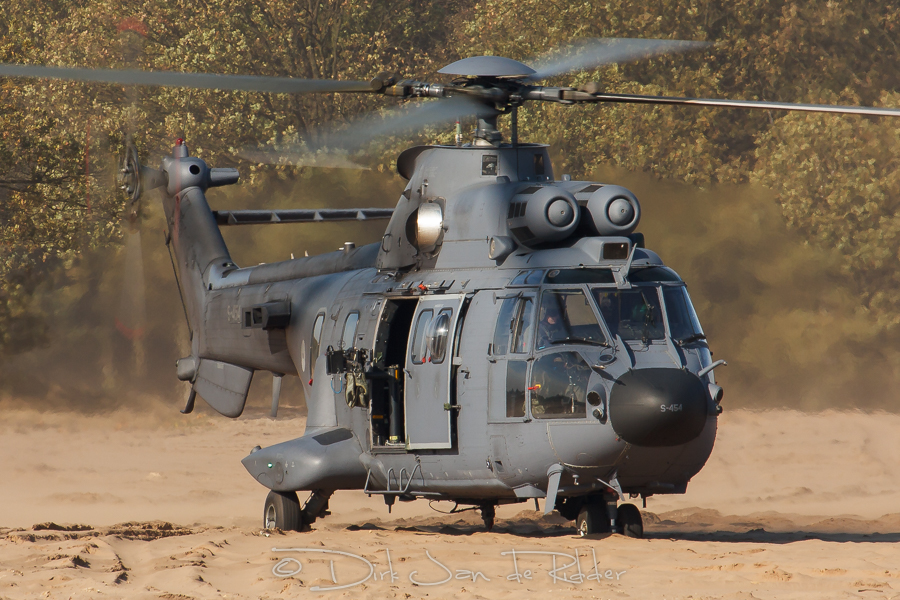
The story of the Apache in the Royal Netherlands Air Force starts in 1996 with the lease of twelve US Army AH-64As, followed by the delivery of 30 new AH-64Ds between 1998 and 2002. Within eight years after the arrival of the first AH-64A, Apaches had deployed to three different continents: Europe (Bosnia in 1998 and 1999), Africa (Djibouti in 2001) and Asia (Afghanistan between 2004 and 2010). Over 1200 flights comprising 7000 hours were logged under ISAF command operating from Kandahar and Tarin Kowt during the last five years. Two squadrons used to fly the AH-64D Apache at Gilze-Rijen, but all 21 Apaches based in the Netherlands now form part of 301 Squadron. The other eight Apaches have always remained in the United States for pilot training at Fort Hood.
In August 2013 the first Fort Hood-based Apaches went to Boeing for Block 2 modification. Most importantly, the Apache will be fitted with an integrated self-protection system against surface to air missiles as opposed to AMASE (Apache Modular Aircraft Survivability Equipment) pods used while deployed in Iraq and Afghanistan. Other modifications include digital recording equipment, improved Identification Friend or Foe and Blue Force Tracker. After Boeing modifies the Fort Hood-based machines, the other Apaches will be upgraded by the RNLAF’s logistical center at Woensdrecht airbase. At a cost of €103 million all 29 Apaches will have been modified by 2017.
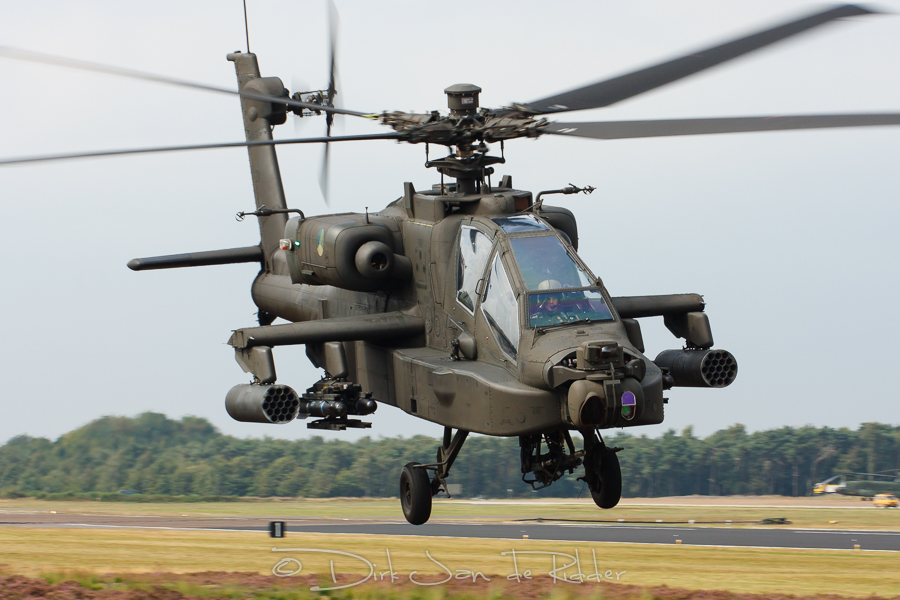
In July 2012 two Cougars deployed to the Gulf of Aden for the Ocean Shield anti-piracy mission carrying marine corps boarding teams. In reality however, they served more as ‘eyes and ears’ of the fleet, flying important ISR (Intelligence, Surveillance and Reconnaissance) missions along the Somali coast looking for suspicious ships. In this role the Cougar served as a gap filler between the Lynx and NH90. Inspired by British and French operations with attack helicopters over Libya, the Dutch started conducting trials in June 2012 operating the Apache from a Landing Platform Dock but these tests have not lead to any decision to train operational pilots and modify helicopters (among other things, they need a blade folding kit to be parked inside the ship).
The primary maritime helicopter will be the NH90. Similar to other nations operating the helicopter, it has had a troublesome introduction in the Netherlands. The first example arrived in December 2009 in a so-called Meaningful Operational Capable state, indicating that it did not meet all contractual specifications, but that training and coast guard tasks could be performed. Other problems arose regarding maintenance support and availability of spare parts. By the end of 2011 only 50% of all planned flight hours had been executed. Base maintenance is centralised at Gilze-Rijen while line maintenance is done at De Kooy by personnel from the squadron itself, which is an organisational switch for the Navy to ‘Air Force standards’ as they used to have a separate maintenance squadron performing both base and line maintenance.
As of early 2014, 10 out of 20 NH90s have been delivered, of which three are fully operational. Originally, all of these would be NFH variants, but current plans call for 12 to be delivered in NFH (NATO Frigate Helicopter) configuration and the remaining eight in TNFH (Tactical NATO Frigate Helicopter) configuration, which will not include mission equipment (sonar). They will replace the AS532s of the Air Force. Whilst the Cougars have assumed maritime roles over the past couple of years it is not yet clear whether the 8 TNFH helicopters will be based at De Kooy or Gilze-Rijen. The final NH90 will be delivered during the first quarter of 2016 after which the first seven NH90s will be brought up to FOC configuration. This will be completed early 2018.
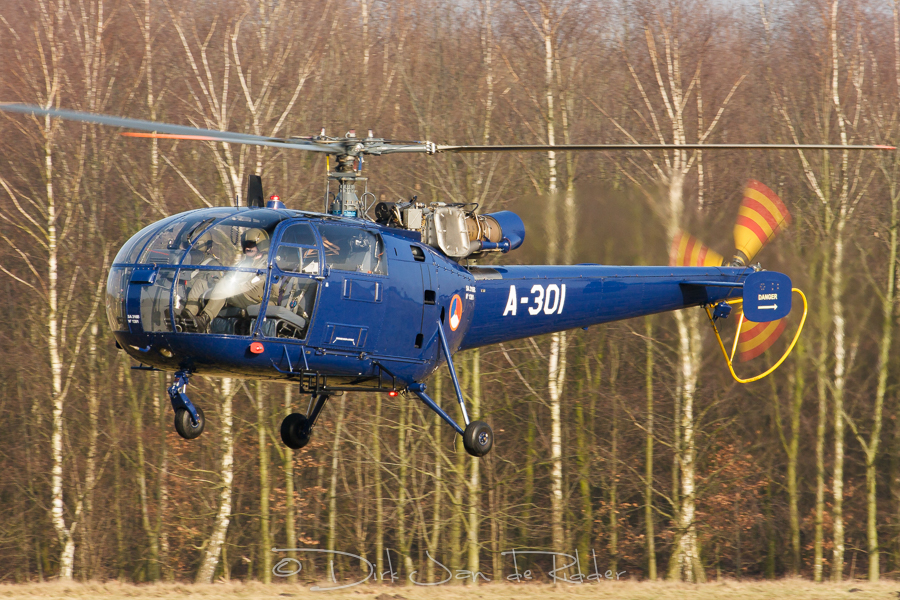
The first helicopter to leave the Royal Netherlands Air Force will be the Agusta-Bell AB412SP on 1 January 2015. Three of these are based at Leeuwarden with 303 Squadron. For day-to-day operations, the island of Vlieland has a forward operating location, which is an ideal location for Search And Rescue over the North Sea, medevac missions from the Wadden Sea islands and close to the Vliehors shooting range. Some 150 medevac/SAR flights are carried out every year, which is about three per week, but during summer it can increase to three flights per day. Last year the squadron flew a record number of missions, bringing 253 people to hospital.
Eight AH-64Ds and three CH-47Fs are based at Fort Hood, Texas, for training purposes. The Joint Netherlands Training Detachment as it was formerly known (and Netherlands Apache Training Detachment before the CH-47F arrived), was recently renamed into 302 Squadron in order to give the unit a more clear position within the armed forces of the Netherlands as well as the United States. The squadron has 108 personnel from the Royal Netherlands Air Force, Royal Netherlands Army and US Army.
The training area around Fort Hood is larger than the Netherlands itself, which also has many more airspace restrictions. Fort Hood is further known for its excellent climate all year round. Apart from training new pilots, two Initial Mission Qualification Training exercises and five Air Assault exercises are held here every year. Apart from realizing a great training environment for pilots and ground troops, keeping these airframes in the United States also has a financial benefit, since no value added tax is paid on airframes remaining in the United States. This saves the ministry many millions of euros in purchasing costs.
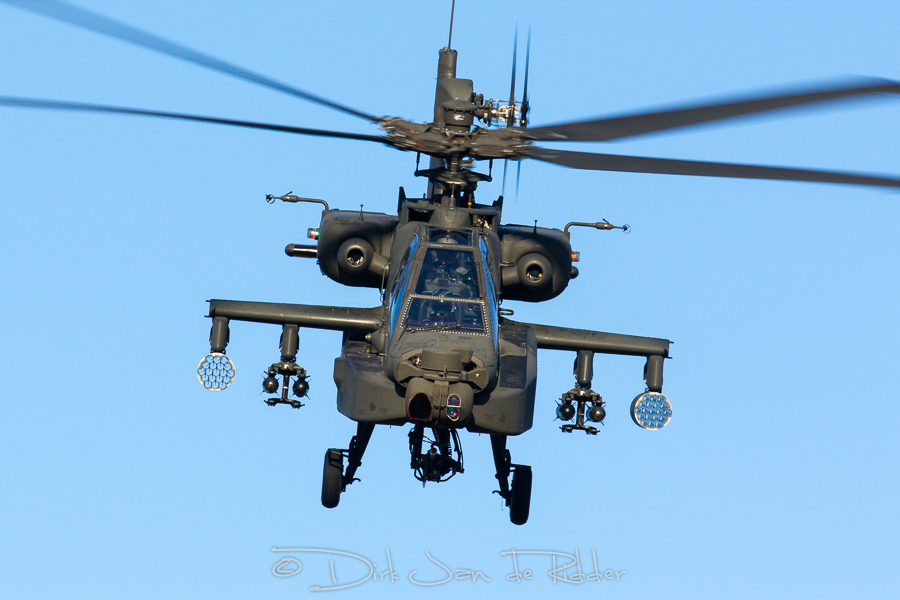
The NH90 made its first operational deployment in January 2013 along the coast of Somalia while operating from HMS De Ruyter. This marked the type’s first operational experience ever, no other user had done this before. The helicopter had still not received Full Operational Capable-configuration, so it only carried out intelligence, patrol and reconnaissance flights. Over a four-month period the NH90 logged 232 flight hours. It supported the capture of nine suspected pirates, the liberation of a hijacked Iranian cargo ship and it carried out coastal reconnaissance missions, which had previously been impossible with the Cougar or Lynx.
The first fully operational capable NH90 deployed to the Netherlands Antilles (in the Caribbean) in August 2013. Its missions included support to the coast guard in the battle against drug traffickers, humanitarian and evacuation flights, as well as Search And Rescue. Five ‘go-fast’ boats were intercepted with a total of 3,600 kg of drugs on board. The RNLAF’s first Search And Rescue mission with the type became a fact when a passenger was taken from a cruise ship and brought to hospital at the island of Curaçao. During this mission 320 nautical miles were flown. The whole four-month deployment comprised 250 flight hours, including training flights with student pilots.
The MoD acknowledges that in 2014 and 2015 the availability of the NH90 will still lag behind its requirements. Its capabilities are sufficient for the anti-piracy operation in the Horn of Africa, but operations in the Caribbean will have to be supported by foreign helicopters. Belgian Alouette IIIs have been taken on board to this area before while a US Coast Guard MH-65C Dolphin and a Spanish Navy SH-60B Seahawk are scheduled to operate from Royal Netherlands Navy ships for 2014.
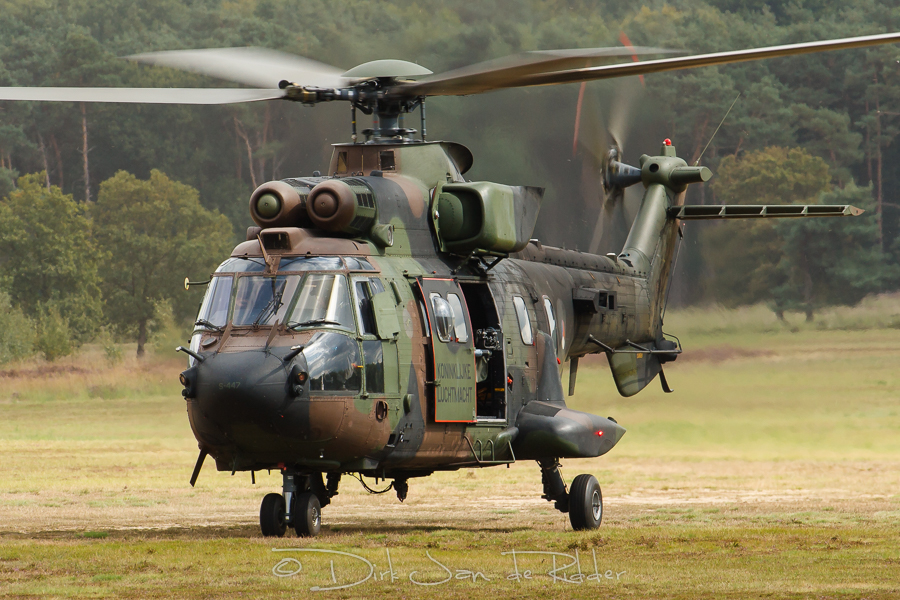
In addition to these maritime missions with the NH90 and Cougar, four Apaches will deploy to Mali in 2014 for the UN MINUSMA mission (Multidimensional Integrated Stabilisation Mission in Mali) in support of a 90 strong team of Dutch special forces team. A group of 14 engineers left for Mali early January to set up an encampment and to prepare the infrastructure for the helicopters’ arrival. As soon as they are ready, the Apaches will follow. They will mainly operate out of Gao in the northern part of the country. The contribution to MINUSMA will last until the end of 2015, but options are open for a longer commitment.
Military operations of the Royal Netherlands Air Force are shifting more and more from fighter jets to helicopters. The hardest hits of budget cuts over the past decade have been taken up by the fighter jet community. Several F-16 squadrons were decommissioned and the fleet has dwindled from 108 to 67 F-16s in less than 10 years. Only 37 F-35 Lightning IIs will replaced the 213 F-16s the Royal Netherlands Air Force once operated. The latest defence budget cuts, announced last year, more or less left the Defence Helicopter Command unaffected. In fact, its budget was increased to create a better balance between tasks and resources. The availability of the helicopters will improve and flight hours are brought back to an acceptable level. The Defence Helicopter Command will always operate under EU, NATO or UN command and in cooperation with other countries, but it will continue to be one of the few countries able to self-support complex military helicopter operations, both over land and water, for the foreseeable future.
A full report appeared in several magazines, including in Rotorblatt:


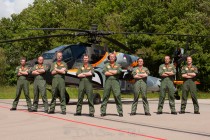
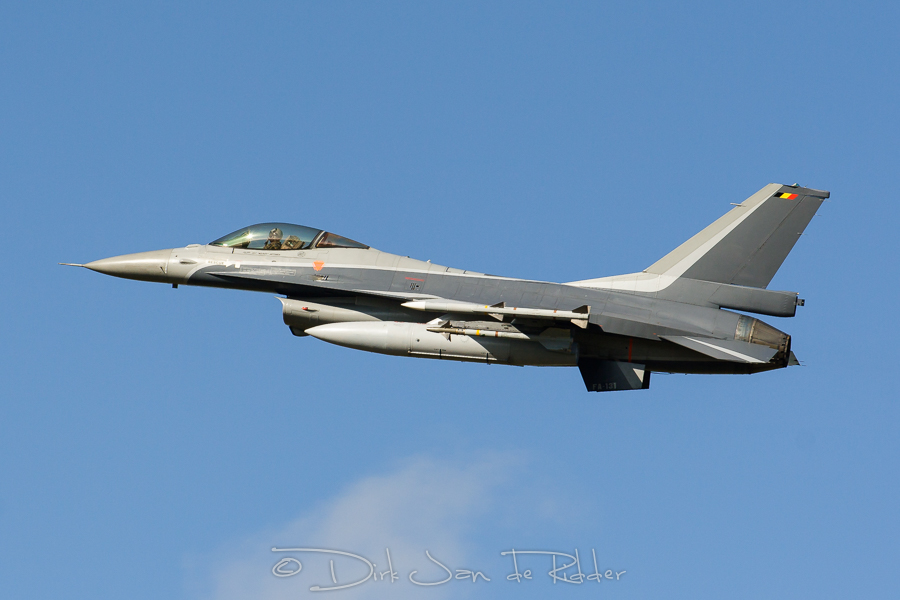

Comments are closed.